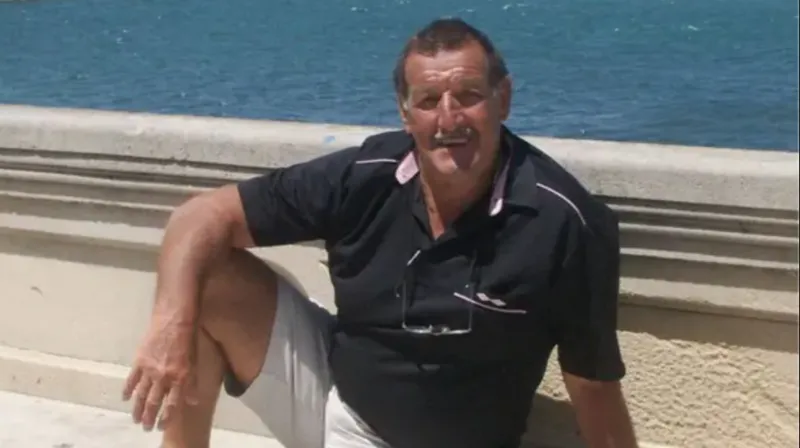A new report has detailed failings in the care of former footballer Colin Flatt during the final months of his life, renewing scrutiny of how the NHS safeguards dignity at the end of life. Coverage of the case described Mr Flatt as having been “stripped of his dignity by the NHS,” a phrase that has resonated widely because it points to the most basic promise of healthcare: respect for the person receiving it. The report’s findings have drawn attention to gaps that can appear when services do not communicate well or organise care around a patient’s needs. Advocates for patients say the case highlights long-standing concerns about consistency and accountability in end-of-life care, even as NHS staff work under pressure.
While the full details sit within the report, the outline is clear: lessons must follow when a patient and family feel let down. The NHS states that every person has the right to be treated with dignity and respect, yet cases like Mr Flatt’s show how this principle can falter when systems fail to respond, listen, and coordinate care.
Context and Timing
The findings came to light in the UK on 15 October 2025, after BBC News reported that a new review had laid bare failings in Mr Flatt’s care during his final months. The report sits within a wider national conversation about patient dignity, safety, and how services learn from serious complaints.

Image Source: BBC
A case that sharpens focus on dignity in end-of-life care
Mr Flatt’s case matters because it cuts to the core of public trust in the NHS. When a family hears that a loved one’s care fell short, the question that follows is simple: did the system uphold its own standards? The NHS Constitution sets out a right to be treated with dignity and respect. That right covers everything from appropriate pain management to clear communication, privacy, and involvement in decisions. When those elements break down, patients can feel unseen and families can feel shut out.
Clinical guidance for the last phase of life stresses careful assessment, symptom control, and honest conversations about what matters to the patient. Professional bodies and national advisers have long warned that rushed decisions, poor handovers, and limited family engagement can cause harm. While staff often deliver excellent care under strain, systemic gaps—missed referrals, unclear plans, and delayed responses—can undermine the patient’s experience. The phrase “stripped of his dignity” captures not only a personal tragedy but also a systemic warning sign.
How NHS complaints and investigations work
When care goes wrong, families can use the NHS complaints procedure. In most cases, they first raise concerns with the organisation that provided the care, which should acknowledge the complaint quickly and agree a plan for reviewing it. The provider then investigates and issues a written response. If the family remains dissatisfied, they can take the case to the Parliamentary and Health Service Ombudsman (PHSO) in England, or to the equivalent body in the devolved nations. The Ombudsman can investigate and make recommendations for action and learning.
Regulators also play a role. The Care Quality Commission (CQC) in England does not resolve individual complaints, but it uses evidence from families and staff to assess services and inform inspections. Health boards and trusts must show how they identify risks, learn from incidents, and improve. NHS organisations have a statutory Duty of Candour, which requires openness and honesty when care causes harm. This duty includes telling patients or families what happened, apologising, and explaining what the service will do to prevent a repeat.
Common gaps: communication, coordination, and continuity
Reviews of end-of-life care often identify the same themes. Poor communication between hospital wards, community teams, and GPs can lead to conflicting plans and missed care. Without clear leadership for the patient’s care, families can struggle to get timely answers. Delays in pain relief, hydration decisions, or referrals to specialist palliative care can leave patients in distress. Documentation can be incomplete or unclear, which makes safe, joined-up care harder to deliver.
Good care relies on continuity. Patients and families need one named point of contact, a written plan that travels with the patient, and a team that meets to review needs. When services deliver that model, families report better experiences and fewer crises. When they do not, hospital readmissions rise, and distress grows. Mr Flatt’s case reinforces the need to make best practice routine, not occasional.
The role of leadership, staffing, and culture
Safe, compassionate care depends on leadership and culture as much as it does on protocols. Managers set expectations for how teams escalate concerns, share information, and respond to families. Senior clinicians shape how services coordinate care across hospital and community settings. If the culture rewards openness and learning, staff feel able to speak up early when something slips.
Workforce pressure can test these principles. Staff shortages and high demand strain the system, but they do not remove the duty to treat patients with dignity. Services that protect time for handovers, ensure adequate supervision, and invest in training tend to manage risk better. When a report highlights failings, the next question is whether leaders will turn findings into training, process changes, and visible accountability.
How families can seek support and drive change
Families who believe care fell short can ask for a meeting with the provider to review records and decisions. They can seek help from Patient Advice and Liaison teams, which support patients in raising concerns and navigating services. Independent advocacy groups and local patient champions can also offer guidance on the complaints process. If a provider’s response does not address the questions, families can escalate to the Ombudsman.
Families often play a vital role in improving care. Their accounts help services understand where plans broke down and what needs to change. Many trusts now bring family representatives into safety panels and end-of-life care groups. That involvement can turn painful experiences into practical changes, such as new checklists for discharge planning, clearer standards for communication at ward level, and refresher training in symptom control and shared decision-making.
Why high-profile cases matter for system learning
High-profile cases focus attention, but lasting improvement comes from consistent follow-through. NHS bodies publish action plans after serious reviews. Effective plans include clear timelines, named leads, and measures that show whether change happens at the bedside. Services should test new processes, review results with staff and families, and share learning across departments and partner organisations. Transparent reporting helps the public see progress, not just promises.
Nationally, learning spreads through clinical networks, professional colleges, and patient safety programmes. End-of-life care remains a priority because it tests every part of the system: clinical skill, communication, logistics, and compassion. When one part fails, the whole experience can unravel. Cases like Mr Flatt’s remind leaders that dignity is not an abstract value; it is the day-to-day work of attentive, responsive care.
The wrap-up
The report on Colin Flatt’s final months adds weight to long-standing concerns about end-of-life care, communication, and accountability in the NHS. It underlines a simple test: do services organise around the person, listen to families, and act quickly to prevent avoidable harm? Patient advocates will look for action plans with clear steps and public updates. Staff will look for the time, training, and support they need to deliver consistent, compassionate care. Families affected by similar issues can use established routes to seek answers and drive change. If leaders turn these findings into better practice on wards and in the community, the lesson from this case can lead to safer care and a stronger promise of dignity for every patient at the end of life.

